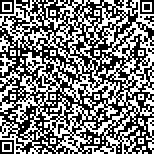李林,王强,尹帅,等.姿势解密技术对脑卒中偏瘫患者下肢运动功能的影响[J].中华物理医学与康复杂志,2019,41(5):325-328
扫码阅读全文

|
| 姿势解密技术对脑卒中偏瘫患者下肢运动功能的影响 |
|
| |
| DOI:DOI:10.3760/cma.j.issn.0254-1424.2019.05.002 |
| 中文关键词: 姿势解密技术 脑卒中 下肢运动功能 |
| 英文关键词: Posture analysis and intervention Stroke Lower limb motor function |
| 基金项目: |
|
| 摘要点击次数: 6008 |
| 全文下载次数: 7348 |
| 中文摘要: |
| 目的 探讨姿势解密技术对脑卒中偏瘫患者下肢运动功能的影响。 方法 选取2017年11月至2018年9月青岛大学附属医院康复医学科收治且符合纳入标准的脑卒中患者40例,根据患者是否接受姿势解密技术治疗,按随机数字表法分为治疗组和对照组,每组20例。2组患者均行常规康复训练,治疗组患者在常规康复训练的基础上给予姿势解密技术治疗。常规康复训练内容包括神经肌肉促进训练、由坐到站训练、平衡功能训练、步行训练,治疗为每日40 min,每周5 d,共治疗4周。姿势解密技术通过全身各部位中立位姿势评估,找到非中立位置的关节或肌肉,调整其结构和功能,治疗为每日10 min,每周5 d,共治疗4周。分别于治疗前及治疗2周和治疗4周后,采用Holden步行功能分级(FAC)、下肢Fugl-Meyer运动功能评定(FMA)和“起立-行走”计时测试(TUGT)对2组患者的下肢运动功能进行评估。 结果 治疗2周后,治疗组患者的FAC、FMA评分与对照组比较,组间差异均无统计学意义(P>0.05);治疗4周后,治疗组的FAC评分[(2.25±0.55)分]和下肢FMA评分[(26.70±4.23)分]较组内治疗前[(1.40±0.60)分和(19.70±5.89)分]均有明显提高(P<0.05),且明显优于对照组[FAC评分(1.76±0.44)分和FMA评分(21.53±6.85)分],组间差异有统计学意义(P<0.05)。治疗2周和治疗4周后,2组患者的TUGT时间较组内治疗前均有明显改善(P<0.05),但组间同时间点比较,差异并无统计学意义(P>0.05)。 结论 姿势解密技术对脑卒中偏瘫患者下肢运动功能具有一定的改善作用。 |
| 英文摘要: |
| Objective To investigate the effect of the posture analysis and intervention on the lower limb motor function of hemiplegic stroke survivors. Methods Forty hospitalized stroke survivors with hemiplegia were divided at random into a control group and an experimental group. The control group (n=20) received conventional rehabilitation training. The experimental group (n=20) additionally received therapy based on posture analysis. Before the treatment and after 2 and 4 weeks of treatment, Holden walking function grading was applied, along with Fugl-Meyer motor function rating, and the timed up and go test (TUGT) was administered. Results After 2 weeks of treatment there were no statistically significant differences between the groups in terms of any of the measures. After 4 weeks of treatment the average Holden and Fugl-Meyer scores of the experimental group were significantly better than those of the control group, though there was still no significant difference in the two groups′ average TUGT times. Conclusion Posture analysis-based intervention can improve the lower limb motor function of stroke patients with hemiplegia. |
|
查看全文
查看/发表评论 下载PDF阅读器 |
| 关闭 |
|
|
|